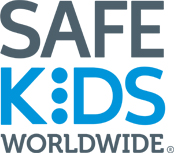You are here
Search
Safe Kids implements a 10-country program called Walk This Way, which works around the world to make communities safer for children to walk. It’s hard to believe that there are places in the world where simply walking to school is not safe for children. But we know we can change this reality for children and families.
Did you see all the news about concussions leading up to the Super Bowl? It’s got everyone talking, from doctors to professional athletes. Even Snoop Dog is weighing in. So in case you missed it, we put together the most intriguing articles all in one place. Check out the articles that interest you the most, and pass this list on to the coaches, parents and young athletes in your life.
The decision to have a child . . . is to decide forever to have your heart go walking around outside your body - Elizabeth Stone
The first time I read this quote I was a brand new mom, and I’m not sure I fully understood just how true it was.
As a kid growing up in Massachusetts, I remember a lot of cold winters and snowy days. But this is one of the coldest winters I can remember in my adult life. Many parts of the country are enduring record cold winters, and according to our furry groundhog friend, it’s not over yet.
When I was about five years old, my dad traveled to Germany on business and came back to our home in the Ukraine with some wonderful treats that I had never seen or tasted in my life. One of these treats was a carton of sweet, delicious pineapple juice. It was the most delightful thing I had ever tasted, and it didn’t take long to drink it all.
Every new parent has been faced with those sleepless nights resulting in gritty eyes and pounding headaches the next morning. Finding the perfect way to get your baby to sleep through the night is just part of the journey. We know it’s tempting for some parents to take their babies to sleep in their own beds or put blankets or toys in a crib to make it seem like a cozier place. But looking at the evidence, we know that there are safer ways to bond or to help your baby fall asleep.
NEW YORK, NY (February 20, 2014)—American Baby and Safe Kids Worldwide today announced the exclusive results from their new survey exposing the risks moms knowingly take in baby sleep safety.
Do you ever wonder what it would be like to experience the world as a toddler again? I, for one, have gotten so used to being an adult that I completely take for granted how enormous the world must seem to little kids. Thanks to Safe Kids partners in Germany and Qatar, you don’t need magic or a time machine to have that experience.
Our partners at the American Medical Society for Sports Medicine (AMSSM) recently released new guidelines about overuse injuries and burnout in youth athletes. Safe Kids had the chance to talk with Dr. John P. DiFiori, the lead author and President of AMSSM, about why AMSSM tackled this issue, how overuse injuries can stop kids from reaching their full potential and how parents, coaches and young athletes can avoid overuse injuries and burnout.
Every 8 Minutes a Child goes to an Emergency Room for Medicine Poisoning
Safe Kids Worldwide Issues Alert: 3 out of 4 ER Visits for Medicine Poisoning are due to Kids Getting into Parents’ or Grandparents’ Medicine
Washington, D.C. – Today Safe Kids Worldwide released a new research report identifying new insights into why kids are getting into medicine nearly 500,000 times per year. Every minute of every day, a poison control center receives a call about a potential medicine poisoning for a child age five and under.
